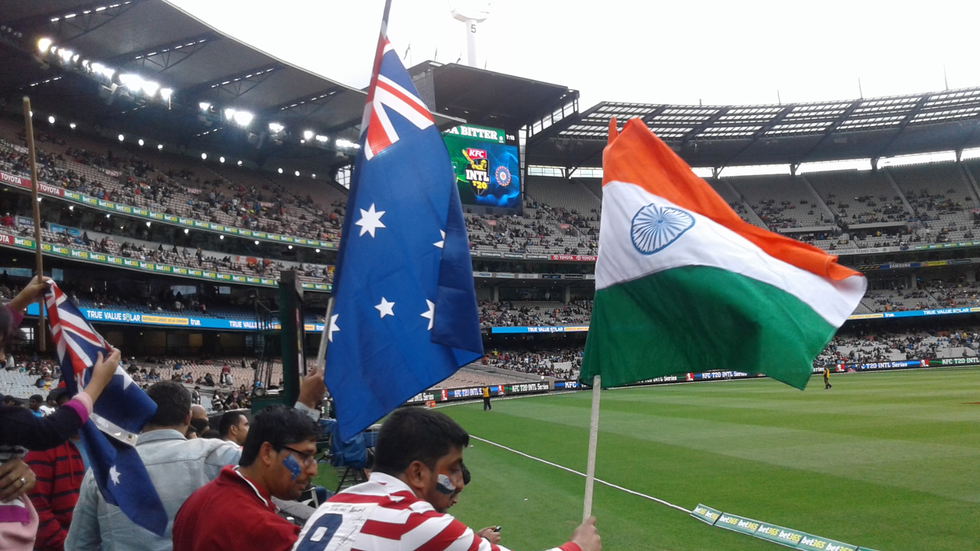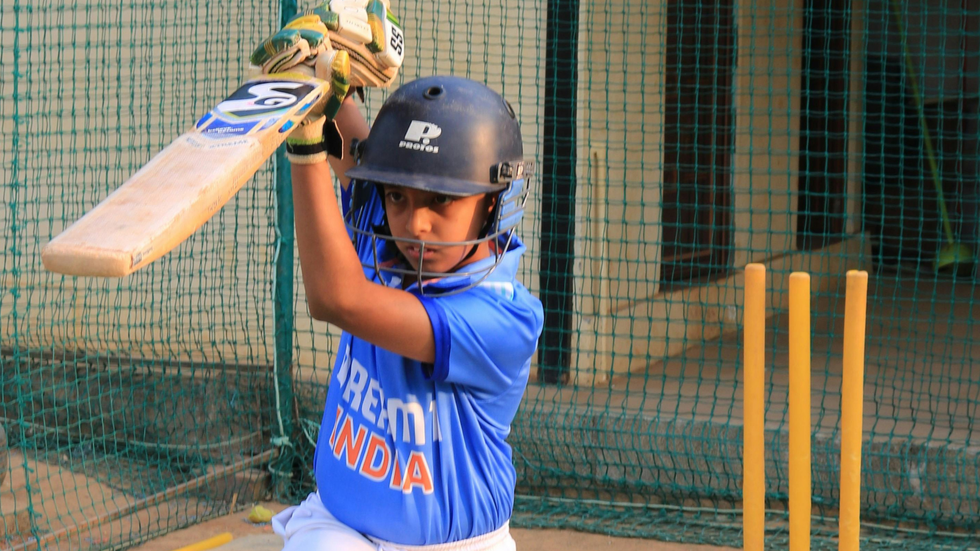Cricket does not merely unite India, it commands it. The game transforms pride into obedience and difference into spectacle, binding a divided country together through performance and profit.
Earlier this year, as I was entering a Sydney pub, a bouncer glanced at my ID and, noticing the bold Government of India insignia emblazoned at the top, asked, "So, who’s your team?"
Before I could respond, he launched into a lively recount of Virat Kohli, the former Indian captain, having a fiery spat with Australian debutant Sam Konstas. I chuckled politely, feigning interest, eager to enter the pub.
Finally, he waved me in. As I waited for my pint at the bar, I found myself pondering this fierce rivalry I had somehow become a part of.
This rivalry is rooted in a long history. For Australia, cricket has been a way to demonstrate equality with Britain, displaying discipline, dominance, and a sense of belonging to the so-called civilised world. In India, the game started as a tool of colonial dominance, but it has evolved into a symbol of resistance and dignity during British occupation. This history still influences how the matches played by both Australia and India are perceived.

National pride around cricket is inherited, passed down through generations, sometimes reluctantly, sometimes eagerly. My father’s voice, raised in joy, during India versus Australia matches stitched the game into our life at home. It's a memory that prompts me to keep up with the score, catch snippets of commentary, to remain involved even when I think I'm not.
The Picton blue cricket jersey adds to this inheritance. It has become a wearable sign of belonging and Indian pride. For many Indians abroad and at home, wearing it is less about sport than affirmation.

As televised cricket flourished, nationalistic emotion itself became a commodity. Advertisers cast Indian cricketers as symbols of aspiration and modernity. Oreo, Pepsi, and Samsonite fused fandom and identity. Supporting the team came to feel like participating in the nation. What began a colonial pastime was rebranded as a patriotic product.
Yet this pride has a fragile edge. When Pakistan beat India in the T20 World Cup in Dubai in 2021, Indian fast bowler Mohammed Shami faced vicious online abuse for his Muslim identity. His loyalty was questioned, as though Indian-ness can be revoked over a match.
Women's cricket reveals these fractures even more starkly. In 2024, Indian batter Jemimah Rodrigues temporarily lost her Mumbai club membership due to pressure from right-wing groups because of her father's alleged "nefarious religious activities" on the clubs premises. She was called slurs, received threats of sexual assault, and taunts of "sticking to the kitchen". Yet her triumph in the recent semi-final against Australia, carrying India to its first Women's World Cup final, brought her back into favour with cricket fans.
Shami and Rodrigues's experiences show how belonging in India can be conditional, especially as a minority.

Cricket's symbolic power is sustained by structure as well as sentiment. The Board of Control for Cricket in India (BCCI), now considered the wealthiest board in the world, manages all international schedules and sponsorships. Players who challenge this system, from Kerry Packer’s rebels to India’s ICL outcasts, face punishment. Meanwhile, corporate campaigns like Nike’s Bleed Blue, billion-dollar broadcast rights, and every ritual playing of the national anthem bind fandom and loyalty. Pride means more when it's shown off.
The narrative extends beyond stadiums. In the Bollywood film Lagaan, cricket became a metaphor for overturning colonial power. But the symbolic victory the film celebrates has since been absorbed into nostalgia and branding. The rhetoric of resistance now circulates in commercials and marketing slogans, suggesting that unity is heritage, something we already possess, rather than something we struggle to create.
The blue jersey is meant to flatten difference, but it cannot erase the way religion, caste, gender and language continue to determine who is embraced and who is reminded of their place. The crowd chants "India! India!" because everyone is expected to perform a sense of belonging.

Watching Indian players hit a ball on a cricket field often feels more like an act of national duty, a spectacle transforming tension into cheers.
Perhaps that’s why I laughed it off at the pub that day. The rivalry wasn’t truly about the teams or the score; it was identity performed on a global stage. Whether in a stadium or a pub, we play along, embodying the pride expected of us. Cricket doesn’t just ask who you support, it tells who you are supposed to be.
Related stories
How Tessa's passion for innovation led her to face across the dessert
 How Tessa’s passion for innovation led her to a race across the desert
How Tessa’s passion for innovation led her to a race across the desertHow young people are taking action to tackle the climate crisis
 How young people are taking action to tackle the climate crisisShutterstock
How young people are taking action to tackle the climate crisisShutterstockSanjana is completing a Master of Journalism and Communication at UNSW. She's drawn to stories at the intersection of politics, gender and culture and believes in journalism that refuses passive language and holds power to account. When she's not reporting, she's baking, shooting on film and finding a good playlist for walks on the beach.






